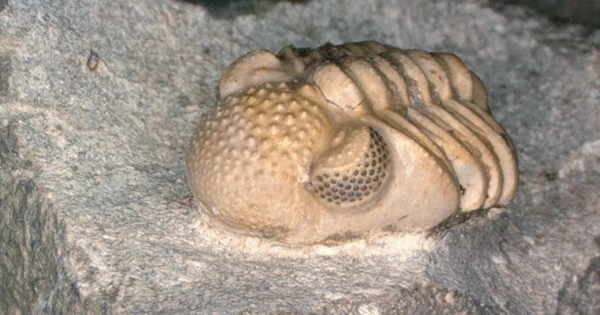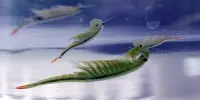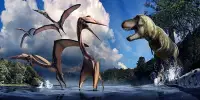A peculiar type of extinct invertebrate known as a trilobite may have engaged in ‘jousting’ for the privilege to mate with females, flipping rivals over on the sea floor to render them ineffective.
After discovering an adult fossil with a misshaped trident, researchers from the Bloomsburg University of Pennsylvania in the US and the Natural History Museum in the UK came to the conclusion that the head tool has a sexual rather than a life-critical purpose.
A species of Walliserops, a marine arthropod that lived on the ocean floor more than 400 million years ago, is the marine arthropod in question.
The new theory is supported by a fossilized specimen of Walliserops trifurcatus with four rather than the typical three prongs on its trident that is remarkably well-preserved and on display at the Houston Museum of Natural History.
The fourth time would have altered the shape of the imbalanced trident, making it less useful for its intended purpose. If the animal was born with that function, and if it were life-critical, every day would have involved a chance of survival.
The fact that this creature lived to adulthood indicates that the trident probably didn’t help with a necessary activity, such as detecting food sources or defending against an attack, which has been postulated as potential uses in the past.
The team discovered rhinoceros beetles to be the closest living example of a sex-combat tool when comparing the tridents of the Walliserops with living organisms. These insects similarly use devices on their heads to wrestle and, in some cases, joust with sexual competitors.
The researchers assert that Walliserops’ trident projection “fits well with the anatomy of a weapon utilized in shoveling actions.” It has a lengthy extension with a broad tip that points outward.
The vibrant peacock feathers and deer antlers are only two examples of sexual selection at work in nature. Additionally, it appears that the Walliserops trilobites’ mating rituals relied heavily on this trident.
If these invertebrates were sexually dimorphic, meaning that males and females had different physical characteristics, is yet unknown. Although no definitive identification of a female Walliserops has been made to date, it’s possible that they possessed smaller or no tridents at all.
Naturally, it’s challenging to draw firm conclusions about extinct species since we only have access to their petrified bones. The Walliserops trident’s enigma may, however, have been resolved as a result of the data presented in this study.
The researchers argue that Walliserops “provides the earliest evidence of combat behavior in the fossil record, very likely ritualized in vying for mates.”
The convergence of morphology, teratology, and biometric data all point to the same conclusion, making it one of the more reliable examples of paleoecological hypotheses, even though fossil life habits are difficult to confirm.















